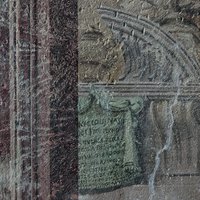
Arquitetura e o Barroco
O barroco rompe um dos conceitos deixados pelo renascimento, movimento cultural que defendia a primazia da razão sobre a emoção. O barroco é uma arte de contrastes que também se desenvolveu como forma de recuperar os crentes divididos pela Reforma, e consolidar a sua fé, impressionando-os, pelos sentidos e emoções, levando-os deste modo a elevar a sua devoção a Deus.
A arquitetura dos Clérigos caracteriza-se pela irregularidade e exagero das formas que originam um efeito cénico surpreendente. Salientam-se as plantas irregulares, as fachadas onduladas, realçadas por uma contraposição de saliências, sacadas e reentrâncias, arcos interrompidos, e uma grande profusão de variadas janelas, complementadas pela exuberante torre sineira. A fachada da Igreja, principalmente a empena, integra um belo trabalho decorativo, sendo talvez a linguagem mais barroca presente em todo o edifício, na qual Nasoni combina linhas retas com linhas semicirculares, decorando-a com motivos ornamentais e simbólicos, entre os quais cartelas, grinaldas, festões, volutas, feixes vegetalistas, jarrões e fogaréus.
Em Portugal, a arte barroca imperou entre finais do século XVII e meados do século XVIII.